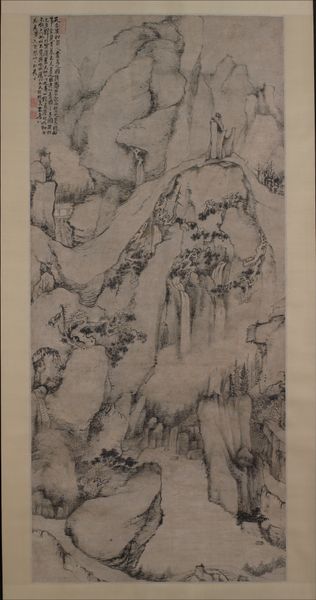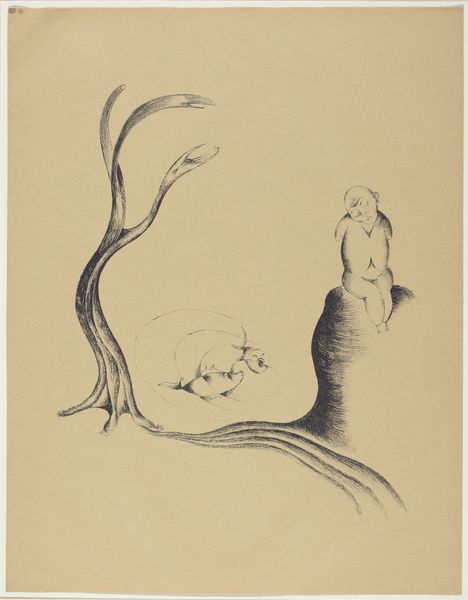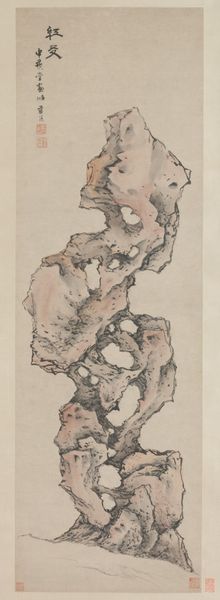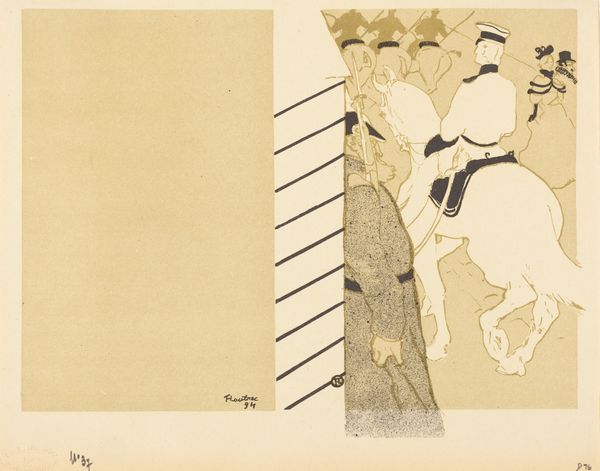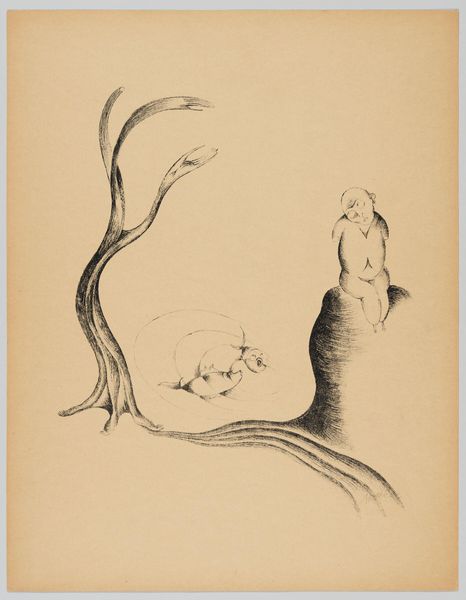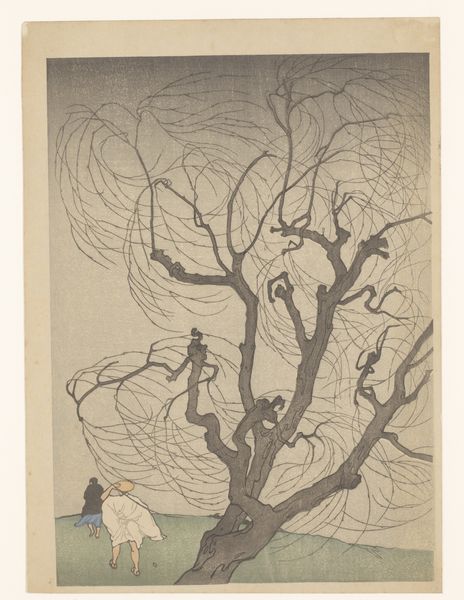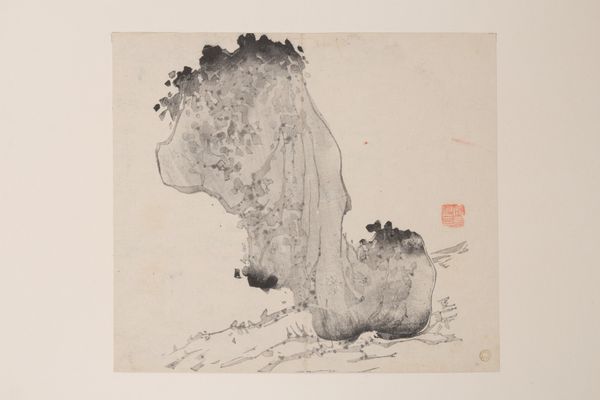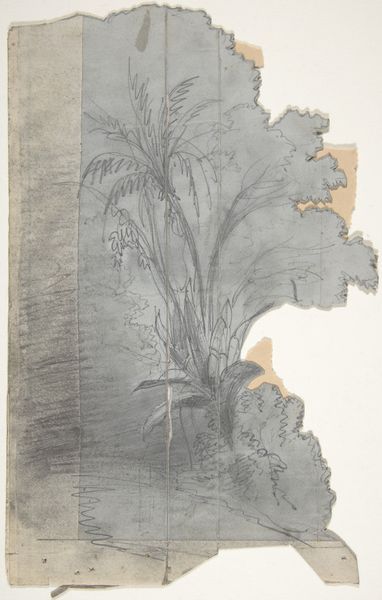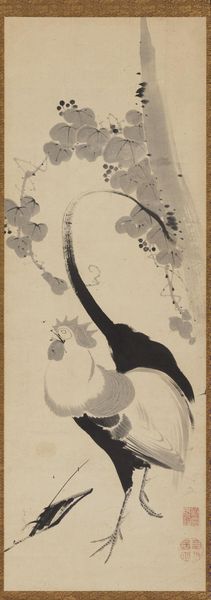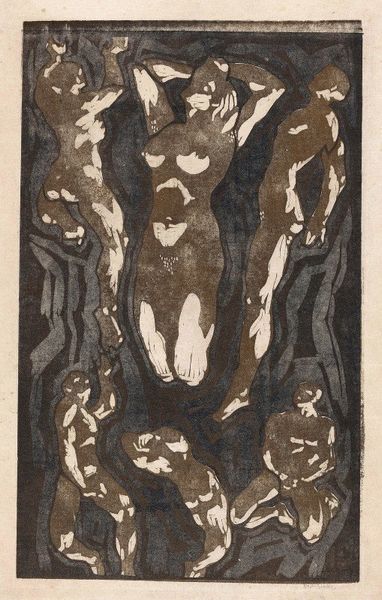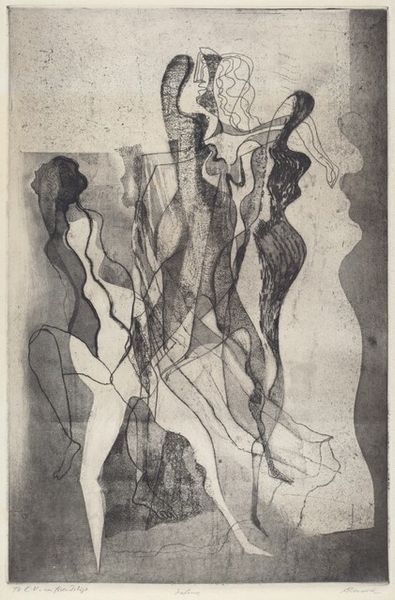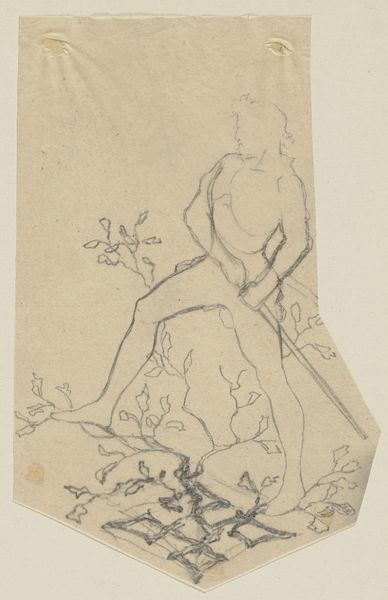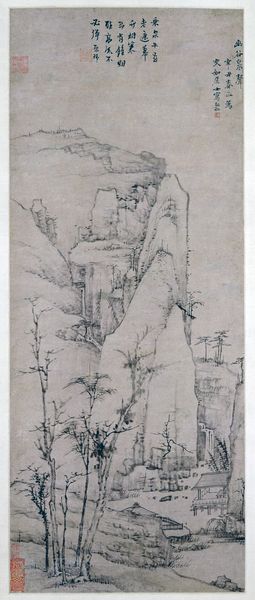
drawing, paper, ink
drawing
asian-art
landscape
paper
form
ink
line
realism
Dimensions: 132 × 55.8 cm (52 × 22 in.)
Copyright: Public Domain
Editor: Right, so here we have Gao Yang's "Strange Rocks," an ink on paper drawing from the early 17th century during the Ming Dynasty. It's... strangely compelling. The main rock looks almost organic, like a giant bone or weathered tree trunk, but undeniably stone. What's your read on this piece? Curator: Considering it through a materialist lens, I find the *act* of representation particularly striking. Yang is using ink—a material readily available and deeply embedded in Ming Dynasty society—to depict rock, another material, but one naturally formed and usually monumental. Editor: So, you're saying the material contrast is key? The deliberate *making* versus the naturally *made*? Curator: Precisely. Ink, processed and applied, is controlled labor. The rocks themselves symbolize permanence and the passage of time, eroded by natural forces. The labor in extracting the ink pigment, grinding it, mixing it – these human processes mirror, in a vastly shorter time frame, the processes that sculpt stone. How does this intentional artistic labour transform a mundane material into art? Editor: It's almost as if he's highlighting the human effort of observation and representation, acknowledging the consumption of resources, the transformation of the ordinary. Did the act of depicting strange rocks, rather than idealized landscapes, carry social meaning at the time? Curator: Absolutely. During the Ming Dynasty, the consumption of precious rocks, particularly scholar's rocks with unusual forms, reflected the literati’s access to global trade networks, social mobility, and perhaps a challenge to existing hierarchies. The accessibility of paper and ink combined with a subject matter that symbolizes affluence produces a striking contrast. Editor: It definitely puts a different spin on a seemingly simple ink drawing. I hadn’t considered the social implications of rock collecting and depiction. Curator: Indeed. By exploring the intersection of material, labour, and social context, we gain a more grounded understanding of the artwork’s deeper resonance.
Comments
No comments
Be the first to comment and join the conversation on the ultimate creative platform.
